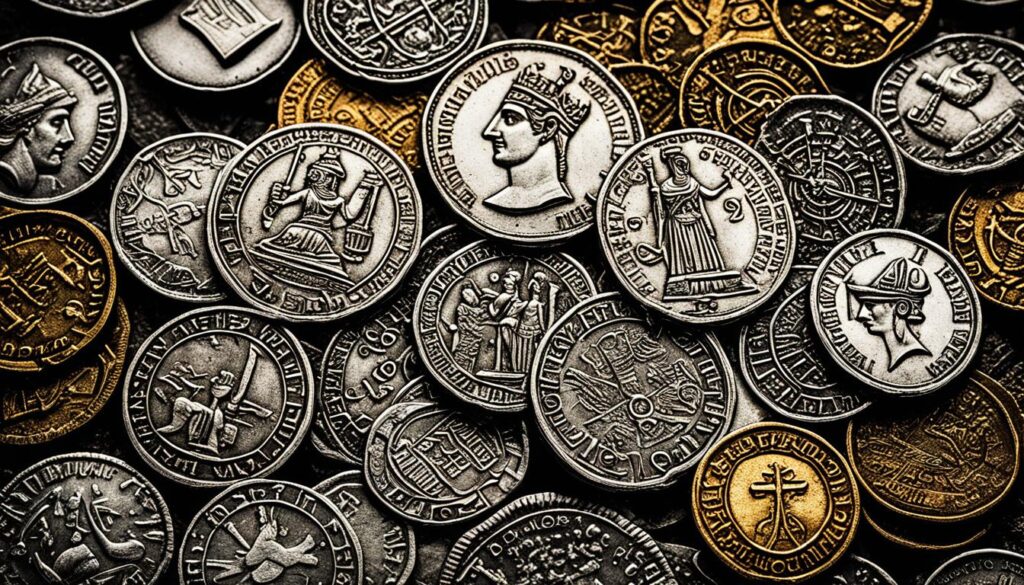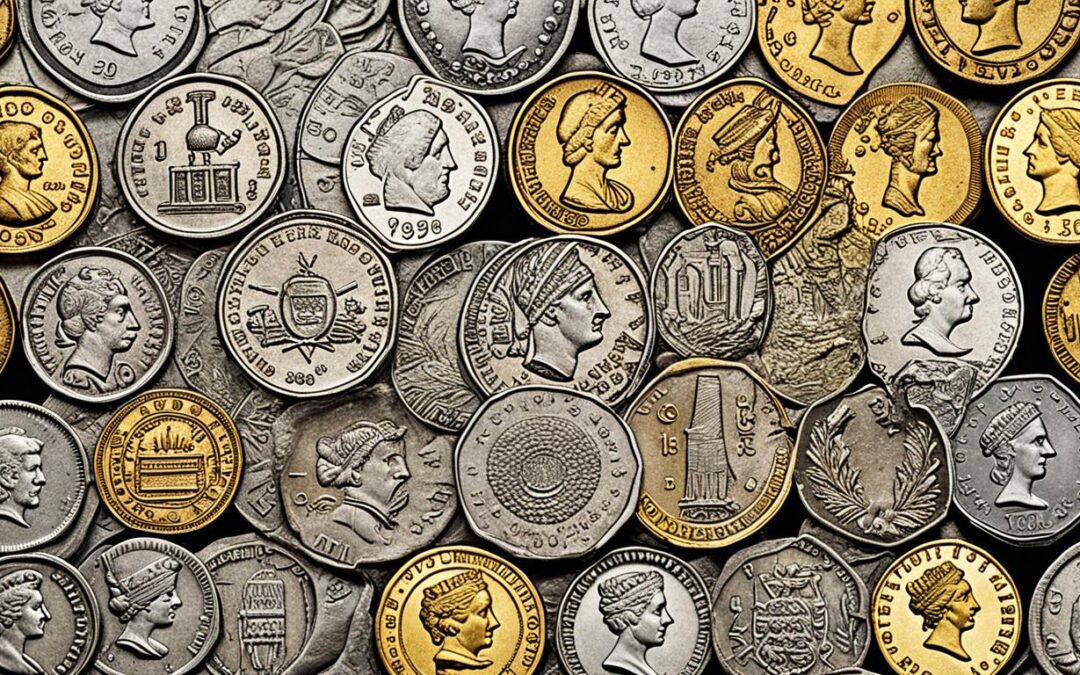Coins have a rich history that stretches back thousands of years. In fact, they have been an integral part of human commerce since ancient times. The origins of coins can be traced back to both the East and the West, where more primitive currencies preceded coinage.
Early currencies took various forms, such as miniature hoes and billhooks in ancient China and bronze celts and rings in western Europe. These primitive currencies eventually evolved into the true coins we know today.
Metal, especially gold and silver, became popular as an exchange medium for its durability, divisibility, and portability. The use of true coinage began around 650 BC, with the Lydians being credited as the inventors.
The earliest coins were made of electrum, a natural alloy of gold and silver, and featured stamped designs. Over time, various civilizations adopted coinage, including the Greeks, Romans, Persians, and Chinese.
Coins have been instrumental in facilitating trade, serving as a measure of value, and contributing to the growth and development of economies. They have a fascinating history that continues to shape our financial systems and global interactions today.
The Evolution of Currency
Before the advent of coins, people relied on bartering, where they directly exchanged desirable objects. However, as societies grew more complex, the need for a more standardized form of exchange arose.
This led to the development of primitive currencies, such as shells, copper, gold, and silver bars, and even live animals, which were used in different regions of the world. These early forms of currency facilitated trade, allowing individuals to obtain items they needed by exchanging goods they possessed.
The introduction of metal coins marked a significant milestone in the evolution of currency. Coins provided a convenient and widely accepted medium of exchange due to their standardized weight, shape, and design. Coins made of precious metals like gold and silver gained popularity due to their inherent value and portability.
The use of coins as currency spread throughout different regions and cultures, enabling trade and fostering economic growth. The introduction of metal coinage revolutionized the way people conducted transactions, offering a more practical alternative to the complexities of bartering.
The following table provides an overview of the evolution of primitive currencies and their transition to metal coins:
| Primitive Currencies | Metal Coins |
|---|---|
| Shells | Gold coins |
| Copper bars | Silver coins |
| Gold bars | |
| Silver bars | |
| Live animals |
The use of metal coins as currency represented a significant advancement in human commerce. Coins provided a practical and universally recognized medium of exchange, leading to increased trade and economic growth.
Image related to the Evolution of Currency:

The Significance of Money in Trade and Interaction
Currency has always played a crucial role in enabling trade and facilitating interaction between different groups and societies throughout history. It has served as a medium of exchange, allowing for the smooth flow of goods and services, as well as the establishment of alliances and friendships. Currency has acted as a common language, bridging the gap between distant communities and enabling people to engage in trade across vast distances.
The impact of currency in global trade can be seen in the early examples of ancient trade routes. Native Americans in the Americas used various forms of currency to conduct trade, creating networks and connections across different regions. The Maritime Silk Road, which connected Europe, Asia, and Africa, relied heavily on currency as a means of facilitating trade and fostering cultural exchange. Coins like the Chinese Yongle Tongbao coins found in ancient Kenyan trade ports exemplify how currency played a vital role in maintaining global connections and stimulating economic activity.
Today, the significance of currency in trade and interaction continues to shape our global economy. Money serves as a measure of wealth, power, and societal well-being. It enables individuals, businesses, and nations to participate in the global marketplace and forge relationships with others. The evolution of currency from ancient trade routes to modern digital transactions underscores its enduring importance in facilitating global trade and promoting international collaboration.

